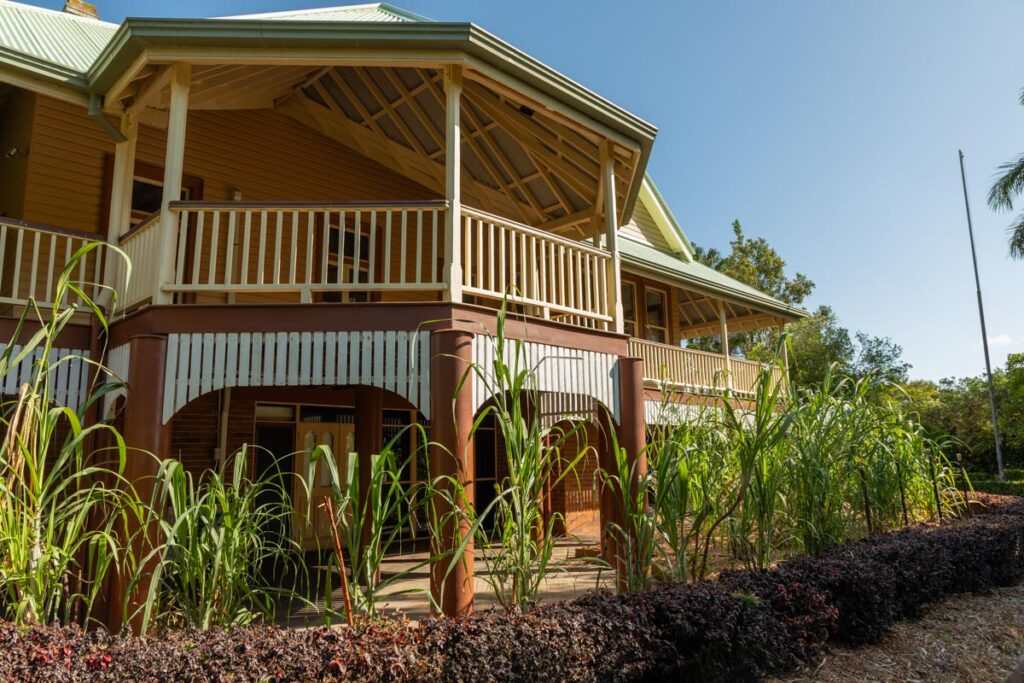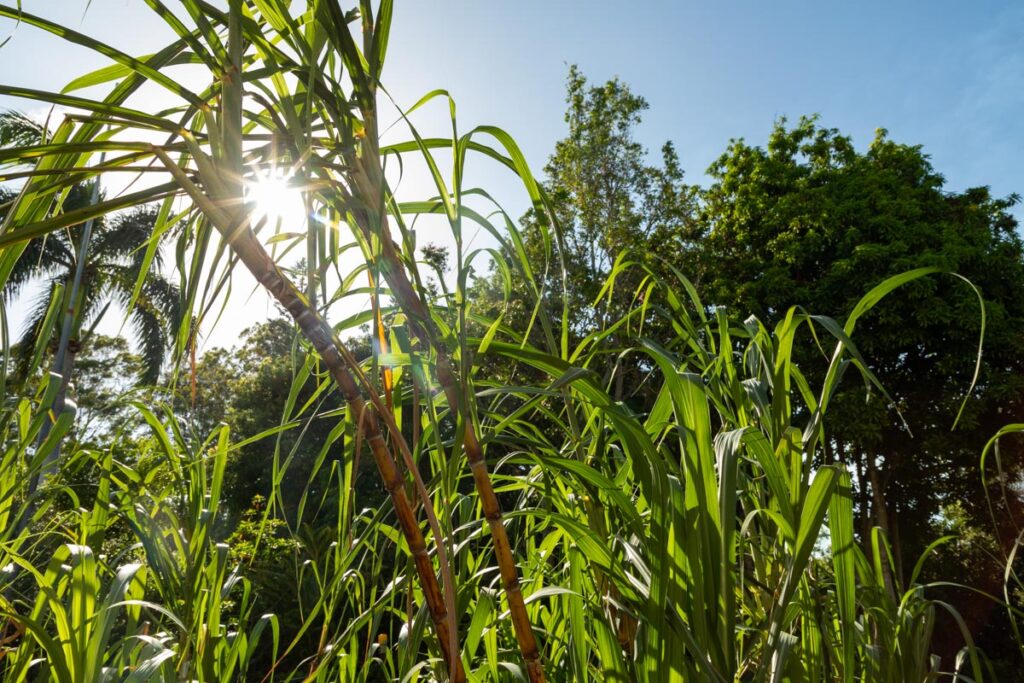
Sugarcane has returned to the surrounds of Fairymead House, with a new display outside the Museum that is a nod to the crop’s importance in the development of the Bundaberg Region.
Bundaberg Botanic Gardens staff have recently planted five varieties of sugarcane by the western side of the museum, where visitors can see the different characteristics of the varieties up close.
The different strains planted, Badila, Pindar, H56, CP51 and one unidentified variety, reflect the development of the crop as a commercial product in Queensland.
Badila is an ancient cultivar of sugarcane and features short dark purple stalks, thick compact growth, and broad leaves.
An ancestor to many modern commercial hybrids, Badila was one of the first varieties brought to Australia from what was then known as New Guinea by Queensland Government Entomologist Henry Tryon in 1895.
Pindar is a variety developed by Colonial Sugar Refining (CSR) in the mid 1940s and approved for commercial planting in Queensland from the late 1940s.

It was reported that Pindar’s high growth rate in Far North Queensland made it a good early cutting crop, and that though it did not perform as well as other varieties in strong wind, the early harvest meant it was cut before the cyclone season.
H56 and CP51 are more modern hybrid variants that are still used in commercial cane operations.
CP51 has golden yellow stalks that are noticeably different to the darker Badila and the unidentified variety.
Agricultural industries represented
With the addition of the sugarcane garden, the Bundaberg Botanic Gardens now features plants that represent three key industries that have contributed to the growth and prosperity of the region – sugar, macadamias and timber cutting.
Examples of every species of macadamia, including the endangered native Macadamia jansenii, can be found in the Gardens’ rare fruit tree orchard.
The timber grove in the Woodworkers Guild section of the gardens acknowledges the early timber cutting industry in the region, which saw vast areas of native scrub cleared for building, grazing and agricultural use.
Fairymead House Museum
Fairymead House, built in 1890, was gifted to the then Bundaberg City Council in 1988 by the Bundaberg Sugar Company and was moved to the grounds of the Botanic Gardens in 1989.
The museum shares the story of pioneering sugar families from Bundaberg, honours the significant contribution by the South Sea Islander community and portrays the sugar production process from cane to crystal.
Photographs documenting the relocation of Fairymead House to the Botanic Gardens have recently been added to the museum’s display.
The photographs were taken and donated by a former employee of the Wide Bay Burnett Electricity Board who was a part of the relocation process.
Found out more about Fairymead House here.





Fascinating to read about the different types of sugarcane. The building itself is well worth visting as you can feel the atmosphere of the old Queenslander where buildings were built ‘on stilts’ to attract the cool breeze for natural air-conditioning. As President of the OUR GLAD ASSOCIATION Inc we have held very successful concerts here and our audiences commented on how it must have felt over the years when Bundaberg-born Gladys Moncrieff would have performed in just such a setting. Highly recommended for locals and visitors alike! A charming and historic old building.
Bourbon was the first variety grown here but was a failure due to rust. It was replaced with Gingham, Bangalore, Black Java and a variety called Big Yellow. Later popular varieties included Rappoe and Fairymead (D1135). BSES had historical varieties in their front garden but no-one seems to know what happened to them.
leonie, two of my deceased aunt’s worked in that building when Charlie Young was the mill mananger. we also have a more powerful connection to Engel, who married my great aunt.